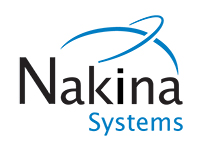There is a lot of conversation about customer experience management (CEM) systems used to manage the customer experience and mitigate against the effects of increased network utilisation and wireless network congestion. However, many of these solutions are mechanisms to alleviate issues rather than curing them. Mary O’Neill, the chief executive of Nakina Systems, tells George Malim that, as communications service providers (CSPs) face heightened complexity as they roll out new technologies and virtualise their networks, ensuring the integrity of the network is the fundamental basis of CEM.
VanillaPlus: What distinguishes Nakina Systems’ approach to CEM from other vendors?
 Mary O’Neill: Nakina provides network integrity assurance. Our solutions ensure network data accuracy by discovering and eliminating network and service configuration errors. Nakina helps customer experience by improving network quality by eliminating network and service configuration errors. Many customer experience issues CSPs deal with trace back to network performance issues, the majority of which are caused by incorrect configurations within the service path. Our solutions understand how the network and services are configured. The associated analytics we generate supply other systems, including policy, OSS, BSS, orchestration and CEM with valuable and timely insights so the appropriate data-driven decisions can be made dramatically improving diagnosis and remediation times. Typical CEM approaches rely on endpoint – user equipment or handset – information, performance monitoring information and probe data. But the network itself plays such an important role in service delivery and, ultimately, the customer experience. Holistic CEM strategies should not only provide realtime performance metrics but also analytics regarding the network configurations themselves, outlining mismatched network and service configuration parameters, alerting network operators to potential service impacting conditions or incorrect network configurations. Extending network behaviour analysis to include security related events becomes increasingly desirable and necessary as IP continues to proliferate and networks become virtualised. By correlating real-time service performance, network parameter changes, and network access events, CSPs can determine not only which configurations may have changed, but when and by whom, and understand potential associated network performance impacts. Using our solutions as part of a holistic approach to experience management helps dramatically reduce network outages and congestion, improving the overall quality of the network and the resulting customer experience. We can also help customers to predict and refine network configurations to drive maximum network stability and performance, introduce new services, reduce customer churn and preserve revenue.
Mary O’Neill: Nakina provides network integrity assurance. Our solutions ensure network data accuracy by discovering and eliminating network and service configuration errors. Nakina helps customer experience by improving network quality by eliminating network and service configuration errors. Many customer experience issues CSPs deal with trace back to network performance issues, the majority of which are caused by incorrect configurations within the service path. Our solutions understand how the network and services are configured. The associated analytics we generate supply other systems, including policy, OSS, BSS, orchestration and CEM with valuable and timely insights so the appropriate data-driven decisions can be made dramatically improving diagnosis and remediation times. Typical CEM approaches rely on endpoint – user equipment or handset – information, performance monitoring information and probe data. But the network itself plays such an important role in service delivery and, ultimately, the customer experience. Holistic CEM strategies should not only provide realtime performance metrics but also analytics regarding the network configurations themselves, outlining mismatched network and service configuration parameters, alerting network operators to potential service impacting conditions or incorrect network configurations. Extending network behaviour analysis to include security related events becomes increasingly desirable and necessary as IP continues to proliferate and networks become virtualised. By correlating real-time service performance, network parameter changes, and network access events, CSPs can determine not only which configurations may have changed, but when and by whom, and understand potential associated network performance impacts. Using our solutions as part of a holistic approach to experience management helps dramatically reduce network outages and congestion, improving the overall quality of the network and the resulting customer experience. We can also help customers to predict and refine network configurations to drive maximum network stability and performance, introduce new services, reduce customer churn and preserve revenue.
VP: Everyone’s talking about CEM so what do you see as your main competitive differentiators and why do these give you an advantage?
MO: We help CSPs preempt network configuration caused customer experience impacting issues. By assuring the integrity of the network in the first place, you essentially prevent customer experience issues from happening. This is important because more than 40% of outages are caused by some sort of network misconfiguration in the service path. Scale is our key differentiation. Our systems collect and analyse data network-wide, for an entire mobile network, spanning multiple technologies and vendors. Some of the world’s largest mobile service providers use our systems. Our strength is the ability to scan and analyse the entire network and pinpoint configuration errors, enabling CSPs to avoid experience-impacting conditions in the first place. Network configuration errors could be complex or very simple. For example, we’ve seen situations where a Cisco cell site router might be connected to an eNodeB from another vendor and interface is configured half-duplex and the other full-duplex. It’s a simple setting, but when network traffic peaks, congestion and packet loss ensues. The end customer has no idea why, they just see slow application performance and dropped calls. Ultimately it comes back to helping our customers protect revenue, reduce churn and introduce new services. It’s also important to address issues that affect high value subscribers by pinpointing service affecting issues.
VP: What benefits have your CSP customers seen by deploying your CEM solution? Are there any commonalities between those who embrace. CEM and those who may be lagging?
MO: Obviously, for our customers one of their key metrics is customer churn. Churn rates remain high in many markets so being able to review and refine the network to achieve stability is important. Even though some of the customers that have deployed our system have the lowest amount of customer churn in their market, when I go to see them they want to talk about how to go further and reduce churn even more. They’re very pro-active across the board. From our work with some very large mobile service providers, we have seen scenarios in which incorrect network configuration errors create the potential to impact mobile signaling performance. Network-wide, this potentially impacts up to 40% of the CSP’s subscribers. Furthermore, the symptoms caused are transient in nature and only experienced under peak conditions – such as when subscribers are placing large numbers of calls or other network requests, making them even harder to isolate. Exacerbating this is the inherent complexity of service provider networks. They are multi-vendor and heterogeneous in nature. For example, a CSP had been suffering from a network issue for some months. Subject matter experts from each equipment supplier involved said its equipment was correctly configured and working properly. In isolation, the configurations were correct but put together in a network, the configurations were incorrect for the services they were supporting. By being able to apply a service aware context, end-to-end across the network, CSPs can eliminate those types of issues and really focus on improving the customer experience, rather than spending time and effort dealing with network configuration errors. We allow the CSP to focus on the root causes, not mitigating symptoms. The great thing is what we do is highly measurable and therefore an attractive investment for CSPs.
VP: Where are you seeing the greatest demand for your CEM system?
MO: Our customers are facing a lot of competitive pressures, such as from over-the-top providers, which is driving them to significantly invest in their networks while trying to reduce costs at the same time. All of our customers are really going through a lot of difficult technology inflections as they implement their business strategies. They’re moving from 2G to 3G to 4G and new 5G technologies, their introducing small cells and carrier aggregation to alleviate congestion issues. They’re investing in NFV and SDN to reduce costs and accelerate new services. For them, it’s about creating a differentiated experience. The rate of change is profound and it’s really hard for service, network and security operations teams to keep pace. As a result, network security – and more specifically privileged identity access management – is another major driver for our solutions. Security breaches almost always trace back to unintentional or malicious activity so controlling access and the network is becoming a greater requirement, and one that is vital to CSPs as they move to virtual networks and start opening their networks to host different types of virtual network functions. We secure access to these networks, and can tell who accessed the network, what they did and when they did it. The correlated data delivers holistic view of what’s happening on the network. Where we can help CSPs is in automating their business processes.
VP: What are the most significant barriers to greater adoption of CEM solutions?
MO: CSP networks are intensely complicated by their nature and that’s only going to continue and is likely to grow as virtualisation is introduced. NFV – and by association SDN – results in networks that are far more dynamic and fluid. Service chains can be complex, and the underlying network itself is constantly changing. Virtualisation introduces a range of new experience-impacting performance interdependencies. The instantiation of a new virtual function or a change in the configuration of the underlying server could have unintended consequences. Being able to discover new services and proactively audit network configuration data will be essential in order to achieve CEM strategies. Today’s siloed approach to experience management will need to evolve. An end-to-end service oriented view is needed. Understanding network configuration analytics along the service path so that it is contextual and service-aware, and has the ability to discover and correlate everything together to learn the topology, will be a key component of customer experience management. Siloes remain in the back office and they need to be bridged to enable a really comprehensive view to be created.
VP: What changes do you expect to see in the CEM market over the next 12-24 months?
MO: I think increased business process automation will be a significant change. We also need to change our definition of customer when it comes to the Internet of Things. Breaking down silos and getting all systems from order management to policy management to experience management will require more automation. We’re working with one of the largest cable providers in the US right now to do that. They’re pushing the boundaries and it’s really exciting. We’re fortunate to be able to do this with them and we’re really looking forward to taking this experience and making it available to our other customers.






